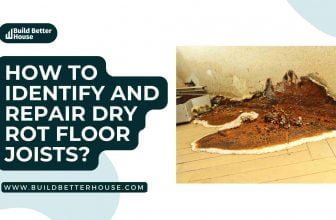Mold Mites: Essential Facts and Prevention Tips

Mold mites are tiny pests that can create a significant problem in our homes if left unchecked. These microscopic creatures, scientifically known as Tyrophagus putrescentiae, belong to the same family as other common household mites such as cheese and flour mites. Although they are almost invisible to the naked eye, their existence shouldn’t be underestimated, as they can cause various issues when their population increases rapidly.
These minuscule arthropods primarily feed on fungi, which means you’ll often find them in areas where mold and dampness are present. Mold mite infestations may initially go unnoticed, but their threat is real as they can cause allergic reactions in some people, as well as contaminate food sources. Identifying the signs of mold mite activity and taking preventative measures is crucial to keeping these uninvited guests at bay and maintaining a healthy living environment.

Key Takeaways
- Mold mites are tiny pests mainly found in damp, mold-prone environments.
- Their presence can lead to allergic reactions and food contamination.
- Preventing and addressing mold mite infestations requires proper mold and moisture control.
Mold Mites Identification
In this section, we will provide you with information on how to identify mold mites based on their physical characteristics and common species. This will equip you with the knowledge needed to distinguish them from other pests in your home.
Physical Characteristics
Mold mites, scientifically known as Tyrophagus putrescentiae, are tiny arthropods with an average size of 0.03 millimeters. Due to their small size, they are practically invisible to the naked eye and can be easily confused with other household mites like dust mites, cheese mites, or flour mites. You may notice them in areas where mold and mildew are present, as these minuscule creatures thrive in damp and humid conditions.
To identify mold mites, examine their physical features closely if possible. They possess eight legs and several setae (hair-like structures) on their body, giving them a somewhat velvety appearance.
Common Species
There are numerous species of mold mites that can invade your home, but most of them fall into the arthropod category. They are commonly found in subtropical and tropical climates where moisture and humidity allow mold to proliferate. Some of these species include:
- Tyrophagus putrescentiae: These mold mites are the most commonly encountered type of mites. They are known to feed on mold, decaying materials (wood, cardboard, etc.), fungi, bacteria, algae, manure, and even dead animal carcasses.
- Cheyletus eruditus: This species is a predatory mite, known to attack and consume other mites, including mold mites, pollen mites, and dust mites. They are helpful in controlling mold mite populations in your home.
Remember to keep an eye out for these tiny but harmful creatures, especially if you live in a damp and mold-prone environment. Armed with this knowledge, you can better address any mold mite infestations and protect your home from these invasive pests.
Mold Mite Habitat
Ideal Living Conditions
Mold mites (Tyrophagus putrescentiae) thrive in environments with high humidity, moisture, and the presence of mold or fungi. These tiny creatures prefer temperatures between 68-86°F (20-30°C)1 and relative humidity levels above 70%2. They feed on decaying materials, fungi, and even dead animal carcasses3. In order to prevent their growth in your home, controlling humidity and moisture levels is essential.
Common Locations in the Home
Mold mites can be found in various locations throughout your home, especially areas where mold and moisture are present. Here are some common places where mold mites might be lurking:
- Bathrooms: Due to high humidity and moisture levels, bathrooms are a popular breeding ground for mold mites. Regularly ventilate your bathroom, clean surfaces, and fix any leaks to reduce the chances of mold growth.
- Kitchens: Food storage areas, such as cabinets and pantries, can harbor mold mites if humidity levels are high and food is left to spoil. Keep your kitchen clean, store food properly, and regularly check for signs of mold.
- Furniture and Upholstery: Mold mites can also inhabit damp or moldy furniture, textiles, and carpets. Periodically inspect and clean your furniture, and use a dehumidifier to maintain optimal humidity levels.
- Windows and Leaks: Mold mites often congregate near damp areas caused by leaks, condensation, or poorly sealed windows. Regularly inspect windows, pipes, and walls for leaks, and promptly repair any issues to prevent mold growth and mite infestation.
By being aware of the ideal living conditions for mold mites and the common locations in your home where they might be found, you can take proactive steps to prevent their growth and protect your living space.
Footnotes
- https://www.sciencedirect.com/science/article/pii/S0964830517313152
- https://www.ncbi.nlm.nih.gov/pmc/articles/PMC7158911/
- https://en.wikipedia.org/wiki/Tyrophagus_putrescentiae
Causes of Mold Mite Infestations
Sources of Mold and Moisture
Mold mites thrive in humid environments with abundant mold growth. To prevent mold mite infestations, it’s essential to address the sources of moisture and mold in your home. Common sources of moisture include:
- Leaking pipes
- Poor ventilation in bathrooms, laundry rooms, and kitchens
- Condensation on windows and walls
Address these issues by repairing leaks, improving ventilation, and using dehumidifiers to reduce humidity levels. This will help to control mold growth and, subsequently, mold mite populations.
Food Sources for Mold Mites
Mold mites feed predominantly on mold, along with decaying materials such as wood, cardboard, and dead animal carcasses. Additionally, they consume fungi, bacteria, algae, manure, and some seeds and bulb plants. The presence of these food sources can contribute to a mold mite infestation in your home. To minimize the risk of an infestation, take the following steps:
- Keep your living space clean and dry to discourage mold growth
- Store grains, seeds, and other high-protein or high-fat foods in airtight containers
- Regularly vacuum and dust to remove potential food sources for mold mites
By addressing the sources of mold and moisture and eliminating food sources, you can effectively reduce the risk of mold mite infestations in your home. Remember to maintain a clean, dry, and well-ventilated living space to keep these pests at bay.
Signs of a Mold Mite Infestation
Visual Indicators
Mold mites are very small and can be difficult to see with the naked eye. However, if you observe small, whitish or beige creatures crawling on surfaces in areas where mold is present, it could indicate a mold mite infestation. They often gather in large numbers, which might make them more noticeable. Mold itself can appear as dark or multicolored patches on walls, ceilings, or other surfaces.
Allergic Reactions
A mold mite infestation can cause various allergic reactions. As these mites are related to dust mites, they share some similar effects on human health. If you’re experiencing symptoms such as:
- Sneezing
- Coughing
- Itchy or watery eyes
- Persistent nasal congestion
- Asthma flare-ups
- Sore throat
- Skin irritation, like contact dermatitis
These symptoms could be an indication of mold mites in your home, especially if they improve when you’re away from the affected area. Keep in mind that these reactions might also be caused by the mold itself, so addressing the mold problem is essential for resolving the infestation and associated symptoms.
Prevention of Mold Mite Infestations
Controlling Moisture and Humidity
To prevent mold mite infestations, it’s crucial to control moisture and humidity in your home or office. Mold mites thrive in humid environments and can cause allergies among occupants. Ensure that you maintain a relative humidity level below 50% to reduce the chances of mold mite populations. Using a dehumidifier can significantly help in maintaining the optimal humidity.
Regularly inspect areas like your kitchen and bathroom, which are prone to high humidity, for any mold growth. Mold remediation should be carried out promptly if you discover mold in these spaces. Pay attention to any cracks and crevices that could harbor mold and subsequently attract mold mites. Sealing these openings with caulk can prevent infestations.
Properly Storing Food Items
Mold mites can infest items like cheese, flour, and other damp or moist food items. Properly storing your food items is essential for preventing their infestation. Here’s how you can keep your food items safe from mold mites:
- Store food in airtight containers: Using airtight containers or ziplock bags can protect your food from mold mites and high humidity.
- Keep food items in cool, dry spaces: Ensure your pantry or food storage area has a consistent temperature, is not exposed to direct sunlight, and is well-ventilated.
- Check for mold regularly: Inspect your food items and pantry for any signs of mold growth. If any moldy food items are found, discard them immediately to prevent mold mite infestations.
By controlling moisture and humidity in your living spaces and properly storing your food items, you can effectively prevent mold mite infestations and avoid the associated problems like allergies and damage to your home or office.
Removing Mold Mite Infestations
Cleaning Techniques and Solutions
To effectively get rid of mold mites, you need to address the underlying mold problem. Begin by cleaning the moldy areas thoroughly. Use a vacuum cleaner with a HEPA filter to remove dust mites, mold spores, and other allergens from the affected surfaces.
Vinegar: Mix equal parts white vinegar and water in a spray bottle. You may increase the proportion of vinegar for a stronger cleaner or add a few squirts of dish soap. Test the solution on an inconspicuous area to ensure it doesn’t damage the material. If safe, spray the entire mold-infested area and let it sit for a few minutes before scrubbing with a brush or cloth.
Baking Soda and Water: Create a paste by mixing baking soda and water. Apply the paste onto the moldy surfaces and scrub with a brush. Rinse with water and let it dry completely.
Bleach: Although effective at killing mold and mold mites, bleach can be harmful to materials and release harmful fumes. Use bleach only as a last resort and in a well-ventilated area. Mix one part bleach with ten parts water, apply it to the affected area, and let it sit for a few minutes before scrubbing and rinsing.
Lemon and Borax: Combine lemon juice and borax to create a natural mold remover. Apply this solution to the moldy area, scrub, and then rinse with water.
Professional Mold Remediation
If the mold problem is extensive, or if you’re unsure about your ability to effectively clean and remove the mold, it’s best to consult a professional mold remediation expert. They have the knowledge, experience, and tools to adequately address the mold growth and prevent future infestations. Professionals will also be able to inspect hidden areas, like behind wallpaper, and determine the best course of action for mold and mold mite removal. In some cases, the use of specialized insecticides may be necessary to eliminate mold mites completely.
By addressing mold growth and taking necessary cleaning steps, you can effectively remove mold mite infestations and prevent them from returning. Always remember to maintain a clean and dry environment, as mold and mold mites thrive in damp, humid conditions.
Additional Mold Mite Information
Impact on People and Pets
Mold mites, or Tyrophagus putrescentiae, are tiny insects that primarily feed on fungal growth. While they don’t bite humans or cause structural damage, their long “hairs” can trigger allergic reactions in some people. These mites thrive in damp environments and typically attack decaying materials, such as wood, cardboard, and organic matter.
Your pets might also be impacted by mold mites. Although mold mites generally don’t pose a direct threat to them, they can still develop allergies to the mites.
It’s essential to take steps toward controlling the levels of humidity in your home to avoid mold mite infestations. Inspection and dehumidification can help prevent their growth. Close-up photography can also aid in identifying the presence of these pests.
Types of Mold Mites in Food
There are several types of mold mites found in food, including cheese mites, flour mites, and grain mites.
- Cheese mites: These mites are commonly found on the surface of aged cheese. They can colonize on fungal growth and are closely related to mold mites. Cheese mites are generally harmless but can affect the quality of your cheese.
- Flour mites: Flour mites can infest stored food products like flour, grains, and cereals. They lay eggs in the food and can cause spoilage. Regular inspection of your stored food and proper storage methods can help prevent the flour mite infestation.
- Grain mites: Grain mites can be found on a variety of stored food items, including grains and bulbs. They consume surface mold and fungus in these storage areas. Like cheese mites, grain mites are usually harmless but can be a nuisance if left unchecked.
In conclusion, controlling humidity, inspecting stored food products, and proper home maintenance can minimize the impact of mold mites and prevent infestations.
Frequently Asked Questions
What causes mold mites to appear?
Mold mites occur when there’s excess moisture and high humidity in your environment. They thrive on damp surfaces and feed on mold growth. To prevent them from appearing, it’s crucial to address the root cause of the mold in your home, such as leaky pipes, inadequate ventilation, or flooding.
How can mold mite infestations be prevented?
To prevent mold mite infestations, you should keep your home dry and well-ventilated. Adequately maintaining the humidity levels below 50% will discourage mold growth and mite populations. Regularly inspect and clean damp areas like basements, bathrooms, and kitchens. Ensure proper ventilation, fix water leaks, and use dehumidifiers or air conditioners if necessary.
What treatments effectively kill mold mites?
Effective treatments against mold mites include using HEPA vacuum cleaners to remove them from surfaces, washing affected items in hot water, and freezing items to kill the mites. In some cases, chemical treatments like benzyl benzoate spray or diatomaceous earth can be utilized. However, always prioritize addressing the source of mold to prevent recurring infestations.
Do mold mite bites pose health risks?
Mold mites don’t actually bite humans, but their presence can cause allergic reactions in sensitive people. Symptoms may include itching, skin irritation, and respiratory issues. If you suspect an allergy from mold mites, consult a healthcare professional for proper diagnosis and treatment.
Can mold mites infest clothing and bedding?
Yes, mold mites can infest clothing, bedding, and other fabric items, especially when stored in damp or high humidity conditions. To avoid such infestations, store your belongings in a dry and well-ventilated environment. Regular washing and drying of clothes and bedding can also help prevent mold mite issues.
How to identify mold mites through pictures?
Recognizing mold mites can be challenging due to their microscopic size. You might need a magnifying glass or microscope to see them. They typically appear as tiny, white or pale-colored insects with a fuzzy or velvety appearance. You can find pictures of mold mites online or consult pest control professionals to help you identify them.






